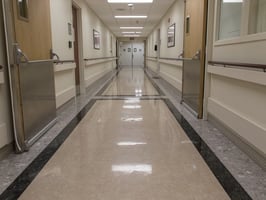Individuals with opioid use disorder (OUD) can achieve therapeutic levels of buprenorphine using a...
Only 1 in 4 Adolescent Treatment Facilities Offers Buprenorphine for Opioid Use Disorder

Only a quarter of U.S. residential treatment facilities for adolescents offer buprenorphine, and only 11% offer buprenorphine for ongoing treatment, according to a study published this week in JAMA. Buprenorphine is the only medication for opioid use disorder approved by the U.S. Food and Drug Administration for use in those aged 16 to 18 years.
“Residential treatment facilities provide an opportunity to reach young people with a range of evidence-based supports at a pivotal time in their lives, and it is crucial that buprenorphine is made available as one of those options,” Nora Volkow, M.D., director of the National Institute on Drug Abuse (NIDA), said in a news release. NIDA supported the study along with the National Center for Advancing Translational Sciences.
Caroline King, Ph.D., M.P.H., of Oregon Health & Science University School of Medicine and colleagues identified all adolescent residential addiction treatment facilities in the United States using the Substance Abuse and Mental Health Services Administration (SAMHSA) Treatment Locator and Google advertising data. They conducted “secret shopper” surveys—they called the facilities and said they were seeking care for a 16-year-old who recently experienced a fentanyl overdose. The callers said they were the patient’s aunt or uncle to make calls more plausible if they did not know specific details about the adolescent. Each facility was called up to seven times on different days. The authors asked specific questions about buprenorphine use and open-ended questions about other available treatments, such as whether the facility offered suboxone (a combination of buprenorphine and naloxone) or medications for depression.
King and colleagues were able to confirm that 160 facilities provided residential treatment to patients younger than 18. Of these, 24.4% offered buprenorphine, including through partnerships with outside clinics. This varied by region, with 18% of facilities in the West offering buprenorphine compared with 40% in the Northeast. Additional findings include the following:
- 17 facilities (11%) provided buprenorphine initiation and offered ongoing treatment; 12 facilities (7.5%) offered buprenorphine initiation but discontinued before discharge; and 12 facilities (7.5%) offered buprenorphine to adolescents younger than 16 years.
- 140 facilities (87.5%) of facilities offered medications for psychiatric comorbidities.
- 86 facilities (53%) reported including families in treatment.
- Among the 121 facilities that did not offer buprenorphine, 57 (47%) indicated that adolescents who were prescribed buprenorphine by their own clinician could continue receiving it, at least temporarily.
“The average parent would need to call [nine] facilities on the SAMHSA Treatment Locator list to find one that offered buprenorphine,” the authors wrote.
“Buprenorphine is the one medication that’s approved for use in adolescents, and it’s underused in facilities taking care of kids with the most severe opioid use disorder,” co-author Todd Korthuis, M.D., M.P.H., head of addiction medicine at Oregon Health & Science University, said in the NIDA release. “It’s a big issue, but it’s something that we can change by supporting these treatment centers with education and technical assistance about buprenorphine, better funding to staff these centers, and by letting the public know that buprenorphine is necessary treatment in healing brains.”
For related information, see the Psychiatric News article “Most Youth With OUD Who Need Medication Treatment Do Not Receive It.”
(Image: iStock/xijian)
Psychiatric News Invites Applications for Medical Editor-in-Chief
APA members who have administrative experience, are passionate about disseminating news in the field of psychiatry, and are knowledgeable about print and digital communications are invited to apply. The deadline for applications, which should include a vision statement and a curriculum vitae, is July 19, 2023.





